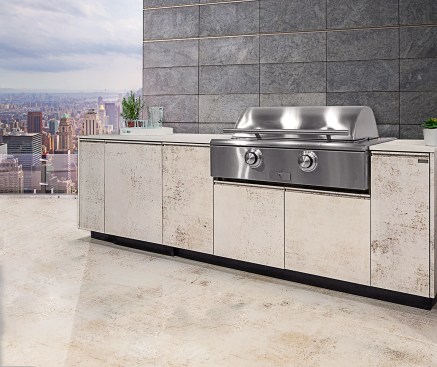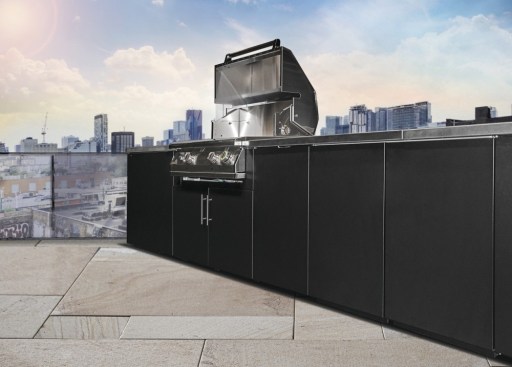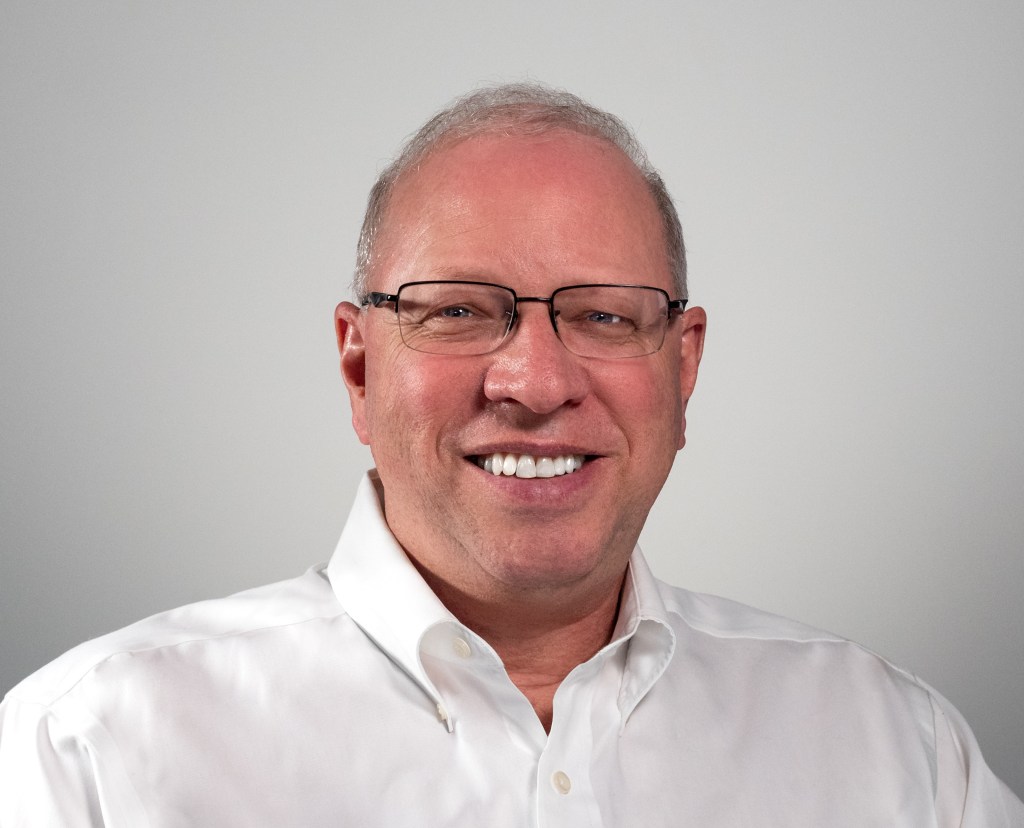Outdoor kitchens are among the most-wanted new kitchen features in new architectural projects, with 49% of 2019 AIA Home Design Trends Survey respondents reporting an increase in their ongoing popularity. However, as recently as 1999, the “outdoor kitchen” barely existed beyond stone or stucco grill islands.
Mitch Slater, founder and CEO of Danver Stainless Outdoor Kitchens and Brown Jordan Outdoor Kitchens, began his outdoor kitchen cabinetry business when the concept was near unknown among builders. Over the past decade and a half he’s watched the sector grow and evolve, retooling his own product to match.
BUILDER spoke to Slater recently about his entry into outdoor kitchens, as well as the past, present, and future of their place in the home.
BUILDER: What led you into the outdoor kitchen cabinet product category?
Slater: I bought a factory in 1998 that made sheet metal copier stands, believe it or not, with no idea what to do other than to figure out something and make something happen. I built some stainless steel carts, and some other kitchen knick-knacks. Then I went to a home show in 1999 and met some of the people at the booths who said I should do something in kitchens, because people are looking for stainless steel components now.
So I talked to some cabinet companies and appliance companies, and the cabinet companies seemed interested in having me make doors for them so they could do accents for kitchens, because stainless was just starting to get hot in the market then.
So I built some doors for a couple of cabinet companies. One of my customers was high end cabinet builder, so he knew how to make cabinets out of wood, and we decided to put the stainless steel over it. We built a whole kitchen that was basically all stainless, but the substrate was plywood. We figured we might get some interest in the New York market for lofts and butlers’ pantries and other things where people were looking for an industrial look with the fit and finish of a high end cabinet.
So we took the kitchen to the Kitchen & Bath Industry Show in Florida in 2000.I had no intention of being in the outdoor kitchen world, because there was no outdoor kitchen then. Outdoor kitchens were grill islands. So someone said, can you put this outside? And I said no, because it’s plywood, it’ll rot. But, I might be able to come up with something.
I got several requests at that show. And I asked them, “Why would someone want it?” And they said, “Our really high-end customers don’t want to have that stucco look. They want it to look like it’s a real kitchen outdoors.” So that was what led me into potential opportunity, so I followed up on a lot of those leads.
I did sell some product by using a PVC foam material as the base instead of wood, and I put the stainless steel over that. And as far as I know we were the first ones to build polymer boxes back then. That was in the 2000s and into 2001, when I brought it to KBIS for the first time as a product line.
And we got a lot of play off of that, including with Viking. We got a partnership with Viking in the 2003-4 timeframe, and at that point they put us on the map as a good supplier of cabinetry, and also validated cabinets as a good alternative for outdoor kitchens.

The TECNO Collection by Brown Jordan Outdoor Kitchens, made in collaboration with designer Daniel Germani, features Dekton by Cosentino countertops and matching powder coat finishes. Shown: Nillium finish.
Since then we’ve put in powder coat finish. I tried it and then I got a call from an architect who said, “I see you can do powder coat, would you be interested in doing a project for me?” I said, “Sure,” and I asked why they wanted powder coat. He said, “We’re trying to design indoor/outdoor rooms that look like it’s an indoor space but really it’s part of an outdoor living space, because there’s no wall on one side or there was, it’s under an overhang but it’s open on three sides.” So we just followed that and got known for that.
I got approached by Brown Jordan, which is probably the leading brand of outdoor furniture in the country, around 2012. Viking had left by then, they decided to build their own cabinets out of stainless, and we decided to stop using plastic at the same exact time. We’ve been all-stainless since 2004.
We had been going along on our own through the recession, growing steadily with a high-end clientele. Brown Jordan came and said, would you be interested in doing a license? They have a lot of architects and designers and high-end builders who know their product, and they wanted a branded outdoor kitchen but they didn’t want to build one. And what I had was a good product, but no one really knew the brand, other than the builder community.
Most people knew about Brown Jordan, and I decided it was worth the risk. What I had to do was sign a license agreement and pay them a royalty when that brand sells. What I hoped it would do was give us a validation for the architect, designer and custom builder people who hadn’t heard of Danver, didn’t know it, and get some credibility that way. And that’s what happened. I was able to get credibility with that community that liked our product as Danver but didn’t know us.
We’ve been doing this for quite a few years, and it’s allowed us to evolve the product and to continue to get the community that we’re interested in serving: the designers, architects, custom builders, and even now production builders who do a lot of high-end homes. They’re looking for all sorts of different applications in this outdoor living space that they’re doing, and we’re developing product for them.
BUILDER: How has the outdoor kitchen trend grown and changed over the course of your time in this field? Do you think it’ll retain its present popularity?
Slater: I think so. I think it’s just starting to grow right now. You can see by the product development and the competitors coming into the space that it’s becoming a more broad-based application of property development. Whether it’s vertical buildings, like amenity packages for apartment buildings, or townhouses, which is a huge growth area, not only for the builders but also for us. And the single family homes, which are now capturing a space in the backyard to be part of the house.
They want to have it look like it’s an indoor product, but to have it outdoors and have it withstand the elements. We’re seeing that spreading across the whole country and through a whole series of products. What we do is as a cabinet company, just like indoor kitchen cabinet companies, is we try to provide the look and feel of the space, and accept any of the appliances that come in. So the cabinets are really what give the consistent look of the space, just like in a regular kitchen indoors.

Courtesy Danver Stainless Outdoor Kitchens
The Post & Panel System by Danver Stainless Outdoor Kitchens, shown here in black, is specifically designed for use in multifamily common areas.
…If you’ll let me talk about the multifamily, that’s been growing for us for the past four or five years. At first we didn’t know what was going on, we were selling these things where we were putting in grill bases, six of them in a row, and we’d find out they’re putting them in an apartment, on a rooftop, so the tenants can go up and use it.
So they’ll have, say, around the pool they’ll have a corner of the pool area where they put three or four little kitchens, with a grill and maybe a side burner. They set that up so, again, the tenants can have a family party there. Or they do them on rooftops, or what they call podiums, which is a mid-level floor and it’s exposed outside. People can go outside and utilize those spaces.
Since they’re public space areas, they have to comply with ADA restrictions in order to put them, in case of wheelchair access or handicap access. So we had to adapt our product to that, which we’ve been doing now for several years, once we started getting these requests from the architects that are designing or the builders that are building.
And they don’t want people storing anything in those cabinets because it’s a shared space. So they’ve been looking for a solution, and we’ve developed a product that has no storage, so we have the grill that goes in a cabinet because it needs access to the gas, but other than that it’s just countertop. And what we did is we made a panel system, so it looks like the cabinets and you’ve got the nice colors, they’re easy to keep clean, quick installation in between the different grills. So that it can be a less costly investment for the developer and also they’re easier to keep clean, easier to install, and therefore less expensive than a full kitchen.
BUILDER: In the course of Danver’s research for its recent Outdoor Living Report, what were your biggest findings and what surprised you the most?
Slater: A large contingent of the people that are buying our product are in cold climates. Peoples’ conception is that Florida must be our top territory, or Texas or California. California is first, but the second largest territory for us is from Boston down to Washington DC.
And then it’s Florida, but then it’s going up into the Pacific Northwest, including Vancouver and Canada, and then the middle of the country. Less so in Texas, believe it or not. We sold more on Long Island than in Texas. It sounds crazy, but the reason is that the clients that we’re selling to are willing to invest in their property for when the weather’s good.
I used to have to fight this battle in the early 2000s for the cost of putting this space in, of, “How many days do I get to use it, actually?” A lot of people said, “Well, I’ve only got three months, and a lot of those days I don’t really want to be out, so I can only use it for one month.” They tried to rationalize the dollars. And these are guys who in a lot of cases, they have a boat. Or a pool, where they’re not rationalizing that. But in many cases I got rationalized out of their budget.
But, over the years, we’ve seen an increasing amount of buyers from these communities where the weather is only warm for 3-4 months, for a few reasons. One is, they have enough money, and second is heaters and fans and misters and different rooftop coverings will allow people to actually extend the use of their space. And they look at it more as if it’s a part of the home.



